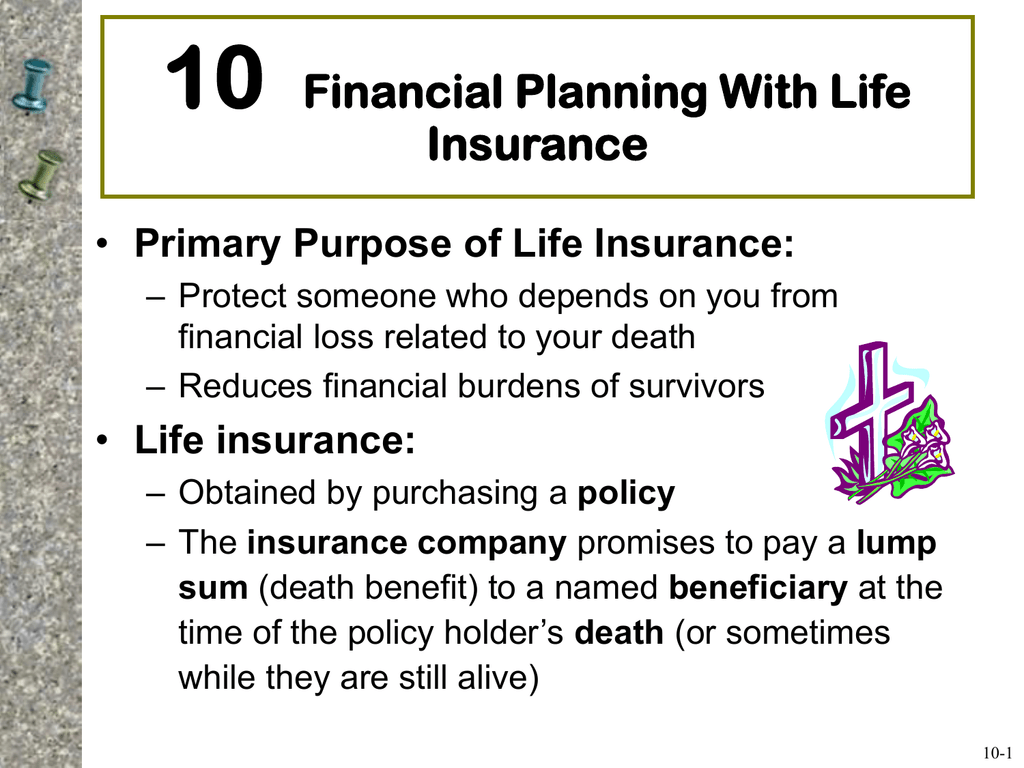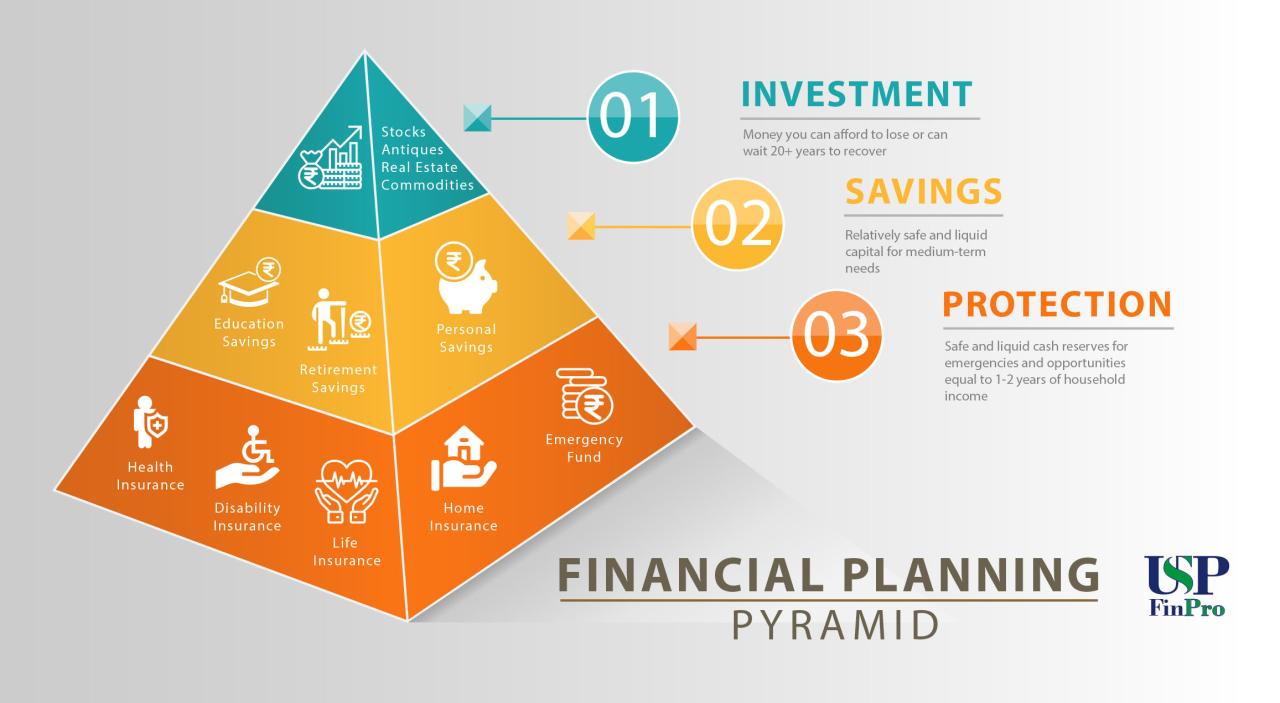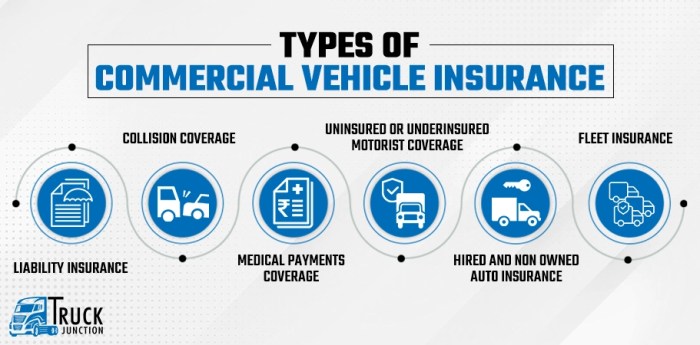Exploring the realm of Financial Planning with Life Insurance opens up a world of possibilities and strategies to secure your financial future. Dive into the intricacies of how life insurance can play a crucial role in shaping your financial plans and goals.
Delve deeper into the nuances of different life insurance options and how they can be tailored to meet your unique financial needs.
Overview of Financial Planning with Life Insurance
Financial planning with life insurance involves incorporating life insurance policies into an individual's overall financial strategy to provide protection and support for their loved ones in the event of unexpected circumstances.
Integrating life insurance into financial planning is crucial as it offers a safety net for beneficiaries and helps secure their financial future in case the policyholder passes away. It allows individuals to plan for contingencies and ensure that their loved ones are taken care of financially.
Importance of Integrating Life Insurance into Financial Planning
- Life insurance serves as income replacement for dependents if the breadwinner of the family passes away prematurely.
- It can cover outstanding debts like mortgages, loans, or medical expenses, relieving the family from financial burdens.
- Life insurance can also be used to fund children's education or supplement retirement savings for surviving family members.
- It provides peace of mind and financial security, ensuring that loved ones are protected and financially stable even in the absence of the policyholder.
Examples of How Life Insurance Can be Used as a Financial Planning Tool
- Term life insurance can be used to cover short-term financial obligations like a mortgage or other loans.
- Permanent life insurance policies, such as whole life or universal life, can build cash value over time and serve as an investment vehicle for future financial needs.
- Life insurance can be leveraged for estate planning purposes to provide liquidity for estate taxes or transfer wealth to future generations.
Comparison of Traditional Financial Planning with the Inclusion of Life Insurance
Traditional financial planning focuses on investments, savings, and retirement planning, while the inclusion of life insurance adds a layer of protection and risk management to the overall financial strategy. By integrating life insurance, individuals can ensure that their financial goals are not derailed by unforeseen events and that their loved ones are provided for in the long run.
Types of Life Insurance for Financial Planning

Life insurance plays a crucial role in financial planning by providing financial protection to loved ones in the event of the policyholder's death. There are several types of life insurance available, each with its own features and benefits that cater to different financial planning needs.
Term Life Insurance
Term life insurance provides coverage for a specific period, typically ranging from 10 to 30 years. It offers a death benefit to beneficiaries if the policyholder passes away during the term. Term life insurance is known for its affordability and simplicity, making it ideal for individuals looking for temporary coverage to protect their loved ones in case of an untimely death.
This type of insurance is suitable for young families, individuals with large debts, or those with limited budgets.
Whole Life Insurance
Whole life insurance provides coverage for the entire lifetime of the policyholder. It offers a death benefit as well as a cash value component that grows over time. Whole life insurance premiums are typically higher than term life insurance but remain level throughout the policy's duration.
This type of insurance is suitable for individuals looking for lifelong coverage and a vehicle for building cash value over time. It can be used as a part of an estate planning strategy or to leave a legacy for future generations.
Universal Life Insurance
Universal life insurance is a flexible type of permanent life insurance that offers both a death benefit and a cash value component. Policyholders have the flexibility to adjust their premium payments and death benefits over time. Universal life insurance allows for potential cash value growth based on the performance of the policy's underlying investments.
This type of insurance is suitable for individuals looking for flexibility in premium payments and death benefits or those interested in potential cash value accumulation.
Strategies for Incorporating Life Insurance into Financial Planning

Life insurance can play a crucial role in financial planning by providing both wealth accumulation and protection benefits. Here are some strategies to consider when incorporating life insurance into your financial plan:
Leveraging Life Insurance for Wealth Accumulation and Protection
- Consider whole life insurance policies that offer a cash value component, allowing you to accumulate wealth over time.
- Utilize universal life insurance for flexibility in premium payments and potential for higher cash value accumulation.
- Explore variable universal life insurance for investment opportunities within the policy, offering potential for greater wealth accumulation.
Using Life Insurance for Retirement Planning and Income Replacement
- Include permanent life insurance in your retirement plan to provide a source of income during retirement years.
- Opt for annuities as a form of life insurance that can provide guaranteed income during retirement.
- Consider purchasing a life insurance policy that includes a rider for income replacement in case of premature death, ensuring financial security for your loved ones.
Estate Planning Strategies Involving Life Insurance
- Designate life insurance proceeds to cover estate taxes and other expenses, ensuring a smooth transfer of assets to beneficiaries.
- Use life insurance to equalize inheritances among heirs, especially in cases where assets are not easily divisible.
- Create an irrevocable life insurance trust (ILIT) to hold life insurance policies outside of your estate, potentially reducing estate taxes and providing liquidity for estate settlement.
Designing a Comprehensive Financial Plan Based on Different Life Stages
- Start with term life insurance for young individuals with dependents, providing cost-effective coverage during the early stages of life.
- Transition to permanent life insurance as you age, focusing on wealth accumulation and protection for retirement and legacy planning.
- Review and adjust your life insurance coverage as you reach different milestones in life, such as marriage, children, career advancements, and retirement.
Considerations for Choosing Life Insurance in Financial Planning

When it comes to choosing a life insurance policy for financial planning, there are several key factors to consider. The role of premiums, coverage amount, and policy terms all play a crucial role in determining the effectiveness of life insurance in your financial plan.
Additionally, personal financial goals and risk tolerance will impact the decisions you make regarding life insurance. It's also important to weigh the benefits of purchasing life insurance early on versus later in life for financial planning purposes.
Premiums, Coverage Amount, and Policy Terms
- Premiums: The amount you pay for your life insurance policy on a regular basis. It's essential to choose a premium that is affordable and fits within your budget.
- Coverage Amount: The sum of money that will be paid out to your beneficiaries upon your passing. Consider your financial obligations and the needs of your loved ones when deciding on the coverage amount.
- Policy Terms: The length of time your life insurance policy will remain in effect. Longer terms may offer more security but could come with higher premiums.
Personal Financial Goals and Risk Tolerance
- Personal Financial Goals: Your short-term and long-term financial objectives will influence the type and amount of life insurance you need. Ensure that your life insurance policy aligns with your financial goals.
- Risk Tolerance: Consider how much risk you are willing to take with your investments and financial planning. Life insurance can provide a safety net for those who are risk-averse.
Buying Life Insurance Early vs. Later in Life
- Buying Early: Purchasing life insurance at a younger age can result in lower premiums and better coverage options. It also provides financial security for your loved ones in case of unexpected events.
- Buying Later: While premiums may be higher when purchasing life insurance later in life, it can still provide valuable protection and peace of mind. Evaluate your financial situation and needs before deciding when to buy life insurance.
Epilogue
In conclusion, Financial Planning with Life Insurance offers a robust framework for safeguarding your wealth, securing your loved ones' future, and achieving your long-term financial objectives. By integrating life insurance into your financial strategy, you pave the way for a stable and prosperous tomorrow.









